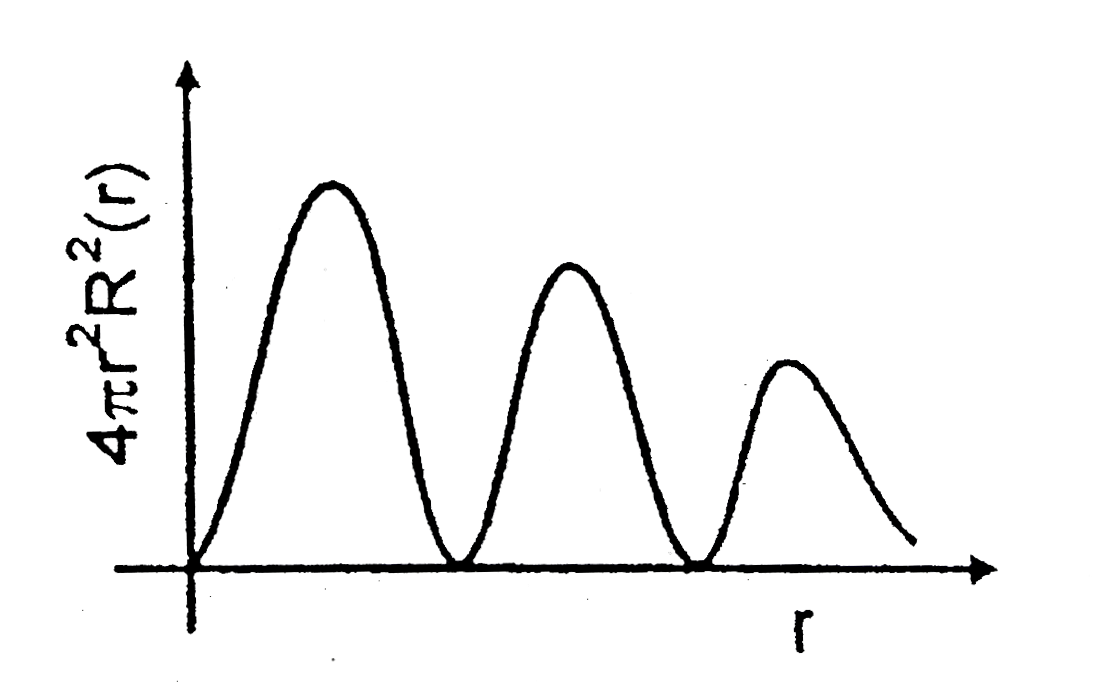For a 3s - orbital, value of Φ is given by following realation:
Ψ(3s)=19√3(1a0)3/2(6−6σ+σ2)e−σ/2, where σ=2r.Z3a0
What is the maximum radial distance of node from nucleus?
(3+√3)a0Z
a0Z
32(3+√3)a0Z
2a0Z
Step by step video & image solution for For a 3s - orbital, value of Phi is given by following realation: Psi(3s)=(1)/(9sqrt(3))((1)/(a_(0)))^(3//2)(6-6sigma+sigma^(2))e^(-sigma//2)," where " sigma=(2r.Z)/(3a_(0)) What is the maximum radial distance of node from nucleus? by Chemistry experts to help you in doubts & scoring excellent marks in Class 11 exams.
Updated on:21/07/2023Topper's Solved these Questions
Similar Questions
Calcuted the distance of spherical nodes for '3s' orbital from nucleus ?
R3s=19√3a3/20(6−6σ+σ2)eσ2 Where σ=2rna0
View SolutionFor an orbital in B+4 radial function is :
R(r)=19√6(za0)34(4−σ)σe−σ/2
where σ=Zra0 and a0=0.529Å,Z = atomic number, r= radial distance from nucleus.
The radial node of orbital is at distance from nucleous.
View Solution
Knowledge Check
For a 3s-orbital
Φ(3s)=1a√3(1a0)3/2(6−6σ+σ2)∈−σ/2
where σ=2rZ3aσ
What is the maximum radial distance of node from nucleus?A(3+√3)aσZBaσZC32(3+√3)aσZD3aσZFor an orbital ,
Ψ300=181√3π(za0)3/2[27−18u+2u2]exp(−u3) where u=zra0
What is the maximum radial distance of node from nucleus of He+ ion ?A(3+√3)3a02B(3+√3)3a04Ca0Da02Given the H−atom Rn,l=19√3(1ao)3/2(6−6σ+σ2)e−σ/2
where σ=2Zrnao,ao=0.53Å
Select the correct statement for the given orbital ?
 AOrbital is 3sBGraph for the given orbital is :
AOrbital is 3sBGraph for the given orbital is : CDistance between radial nodes is equal to 3√3aoDNone of these
CDistance between radial nodes is equal to 3√3aoDNone of these
The Schrodinger wave equation for hydrogen atom of 4s- orbital is given by :
Ψ(r)=116√4(1a0)3/2[(σ2−1)(σ2−8σ+12)]e−σ/2 where a0=1st Bohr radius and σ=2ra0 . The distance from the nucleus where there will be no radial node will be :
View SolutionAccording to qauntum mechanical model of H-like species, and electron can be represented by a wave function (ψ) which contain all dynamic information about the electron. The nature of wave function depends on the type of the orbital to which the electron belongs. For an orbital
ψ=[√281√3π](1a0)3/2(27−18σ+2σ2)eσ3
Where, σ=(Zra0),r = radial distance from nucleous, a0=52.9pm
The number of radial and angular nodes possible for the orbital given above are respectively
View SolutionAccording to qauntum mechanical model of H-like species, and electron can be represented by a wave function (ψ) which contain all dynamic information about the electron. The nature of wave function depends on the type of the orbital to which the electron belongs. For an orbital
ψ=[√281√3π](1a0)3/2(27−18σ+2σ2)eσ3
Where, σ=(Zra0),r = radial distance from nucleous, a0=52.9±
Which of the following represents the position of one of the radial nodes?
View SolutionAccording to qauntum mechanical model of H-like species, and electron can be represented by a wave function (ψ) which contain all dynamic information about the electron. The nature of wave function depends on the type of the orbital to which the electron belongs. For an orbital
ψ=[√281√3π](1a0)3/2(27−18σ+2σ2)eσ3
Where, σ=(Zra0),r = radial distance from nucleous, a0=52.9±
The orbital could possibly be
View SolutionThe wave function of 3s and 3pz orbitals are given by :
Ψ3s=19√3(14π)1/2(Zσ0)3/2(6=6σ+σ)e−σ/2
Ψ3sz=19√6(34π)1/2(Zσ0)3/2(4−σ)σe−σ/2cos0,
σ=2Zrnα0
whereα0=1st Bohr radius , Z= charge number of nucleus, r= distance from nucleus.
From this we can conclude:
View Solution
